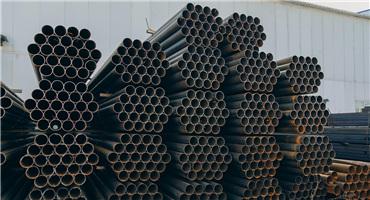U.S. Non-Ferrous Metal Grades
The designation system for non-ferrous metals and the symbols for alloying elements are shown in the table below for reference.

Designation Letters for Alloying Elements
Material: Pure Aluminum and Aluminum Alloys
Grade Composition: Four-digit number group, e.g., 1050, 1060, 2011, 3004, 5005, 6063.
Description: First digit: Classification code.
1: Commercially pure aluminum; 2: Al-Cu series; 3: Al-Mn series; 4: Al-Si series; 5: Al-Mg series; 6: Al-Mg-Si series; 7: Al-Zn-Mg series; 8: Al + other elements; 9: Reserved.
Second digit: Indicates impurity control number for pure aluminum; indicates modification number for aluminum alloys.
Third and fourth digits: For pure aluminum, indicate the minimum Al content in hundredths of a percent; for alloys, indicate the alloy number.
Material: Cast Aluminum Alloys
Grade Composition: ANSI standard, three-digit number + decimal point + suffix. E.g., 100.1, 201.0, 384.1, 520.2.
Description: First digit: Classification code.
1: Commercially pure aluminum (≥99.00%); 2: Al-Cu series; 3: Al-Si-Cu or Al-Si-Mg; 4: Al-Si series; 5: Al-Mg series; 6: Not used; 7: Al-Zn series; 8: Al-Sn series; 9: Other alloys
Second and third digits: For pure aluminum, indicate the minimum Al content after the decimal; for alloys, indicate the alloy number.
Suffix: 0: Casting; 1, 2: Ingot
Material: Pure Copper and Copper Alloys
Grade Composition: Nominal percentage + Cu — nominal percentage + first alloying element symbol — nominal percentage + second alloying element symbol.
Description: Examples: 99.3Cu-7Al, 65Cu-35Zn, 88Cu-Pb-4Sn-4Zn (can be up to quaternary alloys).
Grade Composition: Some pure copper grades use the UNS designation system.
Description: Examples: C10100, C10800.
Material: Cast Copper Alloys
Grade Composition: Uses UNS designation system, e.g., C81400, C83600, C90700, C92200.
Description: C: Copper and copper alloys. First digit after C: Classification code (8 and 9 indicate cast copper and copper alloys). Second and third digits: Alloy number. Fourth and fifth digits: Always 00.
Material: Pure Magnesium
Grade Composition: ASTM standard uses a four-digit number + letter A (B, C), e.g., 9980A, 9998A
Description: The four-digit number indicates purity level (e.g., 99.80 means magnesium content not less than 99.80%). Letters A, B, C indicate different impurity content requirements.
Material : Magnesium Alloys (including ingots, castings, and wrought products)
Grade Composition: Alloy element letter symbol + number group + letter A (B, C), e.g., AM60A, AS41A, AZ91C, KH32A, QE22A
Description: Letter symbols for alloying elements refer to the "Letter Symbols for Alloying Elements" table. Number group indicates alloy number. Letters A, B, C represent different impurity level requirements.
Material: Nickel and Nickel Alloys
Grade Composition: AMS Standard: Represented directly by the standard number. ASTM Standard: Uses the UNS designation system, i.e., N + five-digit number.
Description: Examples: N02200, N04405, N06022 (N: Nickel).
Material: Titanium and Titanium Alloys
Grade Composition: MIL standard.
Description: Examples: 3Al-2.5V, 6Al-2Sn-4Zr-2Mo
Grade Composition: Nominal percentage + main alloying element symbol — nominal percentage + other alloying element symbols (up to quaternary alloy composition).
Description: Examples: B(6Al-2Sn-4Zr-2Mo), C(6Al-4V)
Grade Composition: Also designated using letters A, B, C, D, E, F, G, etc.
Grade Composition: ASTM standard does not have a unified designation system; grades are indicated using standard numbers and specific designations within them.
Description: Examples: ASTM B338 Grade 7, ASTM B367 Grade C-3, ASTM B381 Grade F-4 (C — casting, F — forging)
Grade Composition: AWS standard: ERTi + sequential number or nominal composition + alloying element symbol.
Description: Examples: ERTi3, ERTi3Al2.5V
Material: Sponge Titanium
Grade Composition: ASTM standard: Capital letter category code + numeric code.
Description: Examples: GP-1, ML-120, MD-120. Letter category codes: MD — Magnesium thermal reduction + vacuum distillation refinement; ML — Magnesium thermal reduction + leaching or inert gas refinement; SL — Sodium thermal reduction + leaching refinement; GP — General purpose (applicable to both magnesium and sodium methods).




